Rather than call a home service contractor, an individual may choose to do small building and repairing tasks on his own.
Not only can DIY save him money, but he gets the full credit for having finished the work as he likes—and not to mention that it can be great fun.
Whether you have been doing small DIY works for a while or just starting out, we’ve listed here the 10 tools you should have in your DIY beginner’s toolkit to take on your next project.
Scroll down to know more about them!
3 Reasons Why You Should Have A Toolkit At Home
Each person may have different reasons for having a reliable toolkit at home. But, here are the most important ones why we think you should have one:
1. For emergency repairs and fixes at home
There are plenty of instances when you may need your handy toolbox—the breaker exhibits problems, the door jams, the pipe starts to leak, and many more.
Given this, it makes sense to have all the different tools you need. Besides, you never know what a situation will require of you to solve the problem.
In a way, having them can ensure that you can be safe, warm, and comfortable at home because you can troubleshoot or fix minor issues relating to your home and its parts.
2. For custom DIY projects
The second reason you should have a DIY beginner’s toolkit is you might want to do a custom project so the outcome will have your desired style and function.
Perhaps you’d want to install tiers of floating shelves in your room, hang beautiful paintings, build a birdhouse, assemble a bicycle, or do other tasks.
Also, it can be healthy because you’re working hard to build something and using your free time productively. But we want to remind you to always take care and be safe in conducting the work.
3. To improve your carpentry and equipment-use skills
Even though you aren’t a professional carpenter, it’s vital to develop your building skills so that you can fix broken furniture, plumbings, or doors yourself without calling a contractor.
Of course, there’s a proper and safe technique for using the tools and shouldn’t be taken lightly. But, you can start small, be careful, and work toward getting better and better.
Doing DIY can be a lifelong endeavor that can benefit you and your family. And when you become adept at it, you could even teach your kid how to make repairs or do small building works.
The Must-Have Tools in Your DIY Beginner’s Toolkit
With that in mind, here are the essential tools that you should have in your DIY beginner’s toolkit!
1) Tape Measure
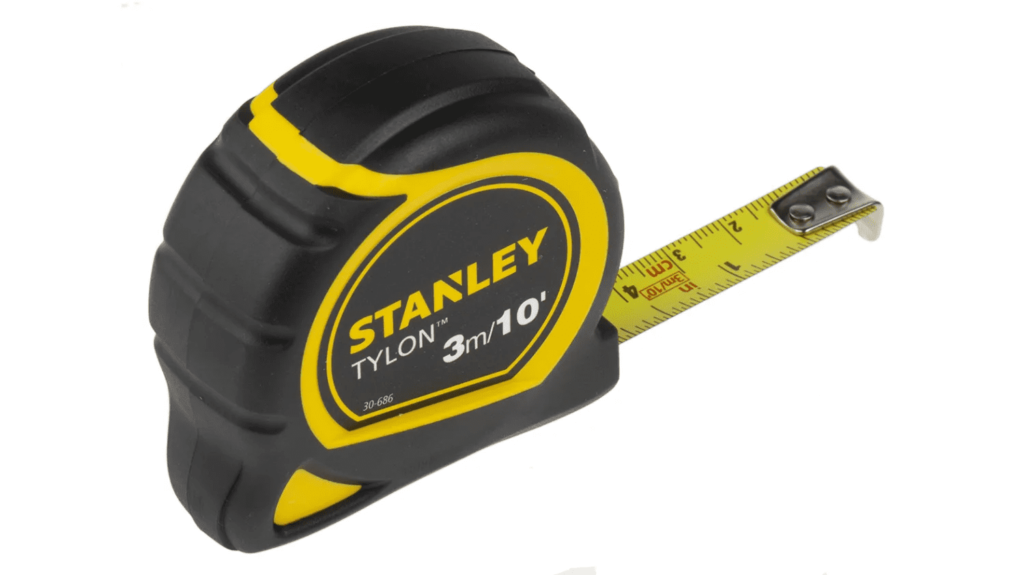
Every DIY’er has to have a tape measure in his toolkit. With it, you can measure all sorts of things from your floor area for new carpet installation to the height of the deck you’re planning to build.
A tape measure comes in different styles and lengths. For beginners, the standard size of 3.05 or 3.66 metres should be enough to perform small and simple carpentry tasks.
Well-known and trusted brands include Stanley, Fiskars, Singer, and Swanson. Don’t just buy cheap and poorly calibrated products as this can result in big project mistakes and expenses.
2) Screwdriver Set
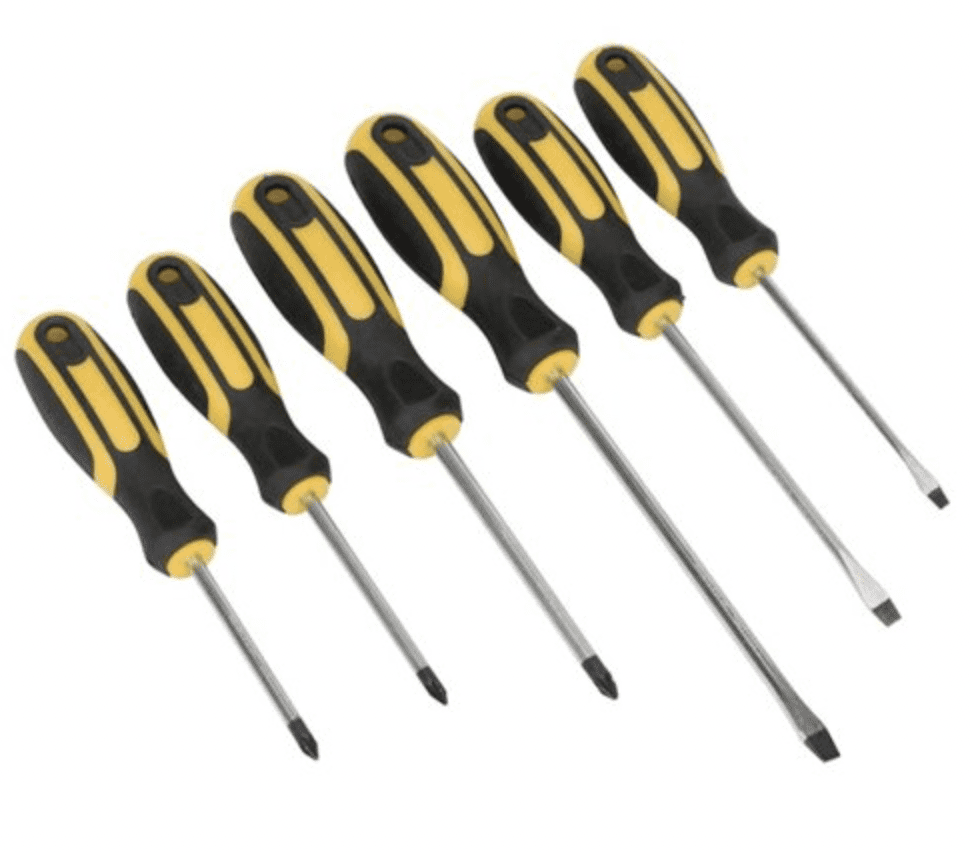
Screws are widely used at home from door hinges to dry walls to hold them onto a surface. With a versatile screwdriver set, you can install or unwind various types of screws effortlessly.
The basic set should include a slotted, Phillips, Robertson, Pozidriv, Torx, and hexagon screwdriver. Like you can see in the picture above, these differ in lengths too.
You might also be familiar with stubby screwdrivers. Having a shorter shaft and round, stout handle, they are extremely useful for reaching difficult-to-access screws.
3) Hammer
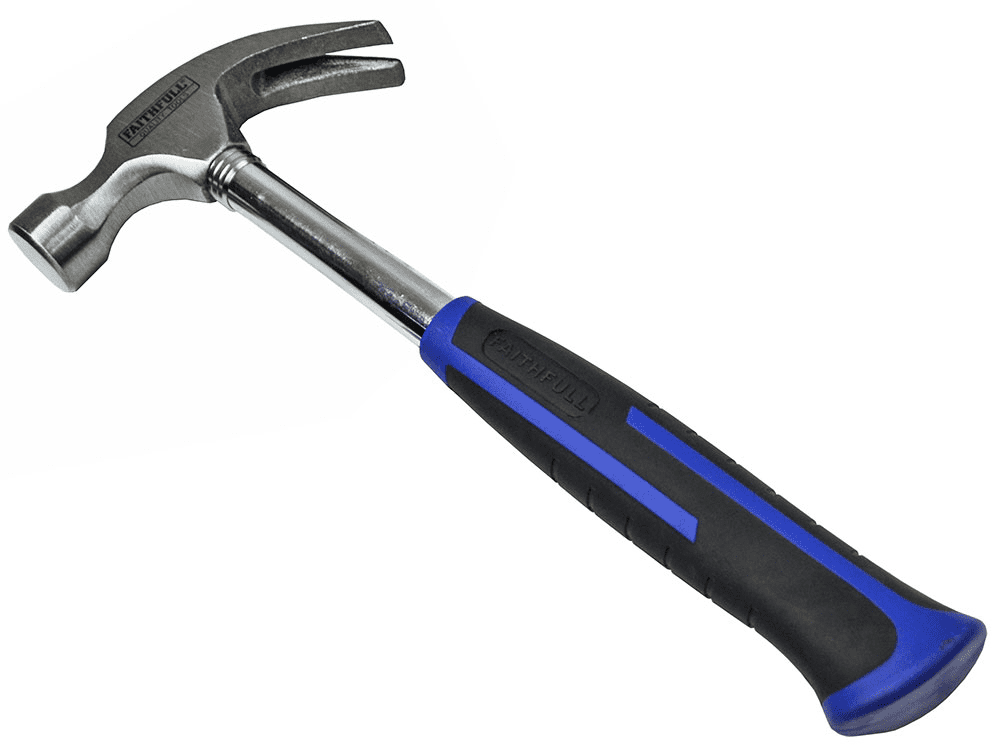
One of the basic tools of an aspiring or expert DIY person, a hammer lets you drive nails into walls to hang an ornate dreamcatcher, assemble a cabinet, construct a bookcase, and so on.
It helps to get one with a comfortable handle for your hand. And, as for the clawed side, it is used to pull out crooked nails just like a stapler can bite off staple wires.
4) Razor Knife
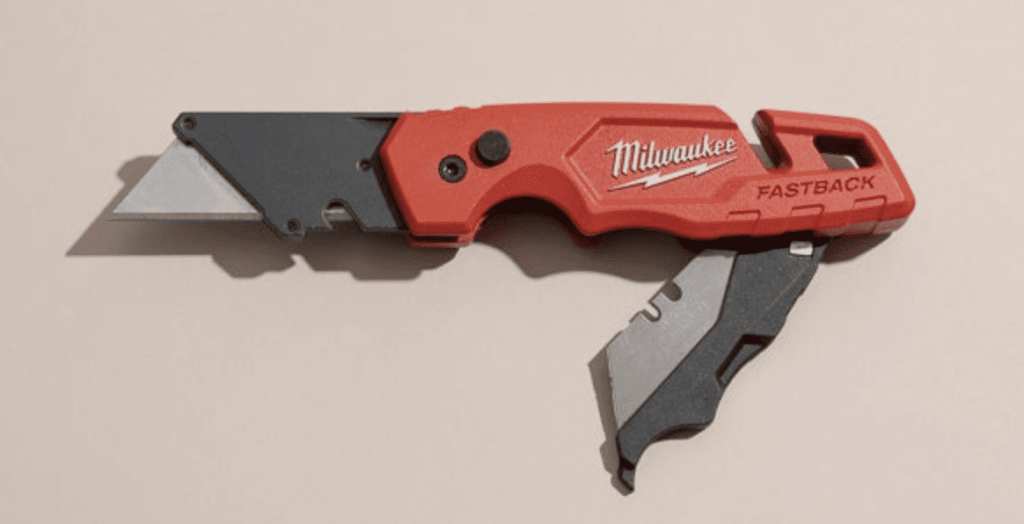
Also called box or utility knives, razor knives are suited for a wide variety of DIY building works like slicing wood, cutting cardboard boxes, sawing rope, even trimming roof shingle edges, and more.
There are different kinds of razor knives with straight, serrated, hooked, scallop, round, and snap-off edges. Make sure to get sharp and decent ones to make cutting effective and safe.
5) Pliers
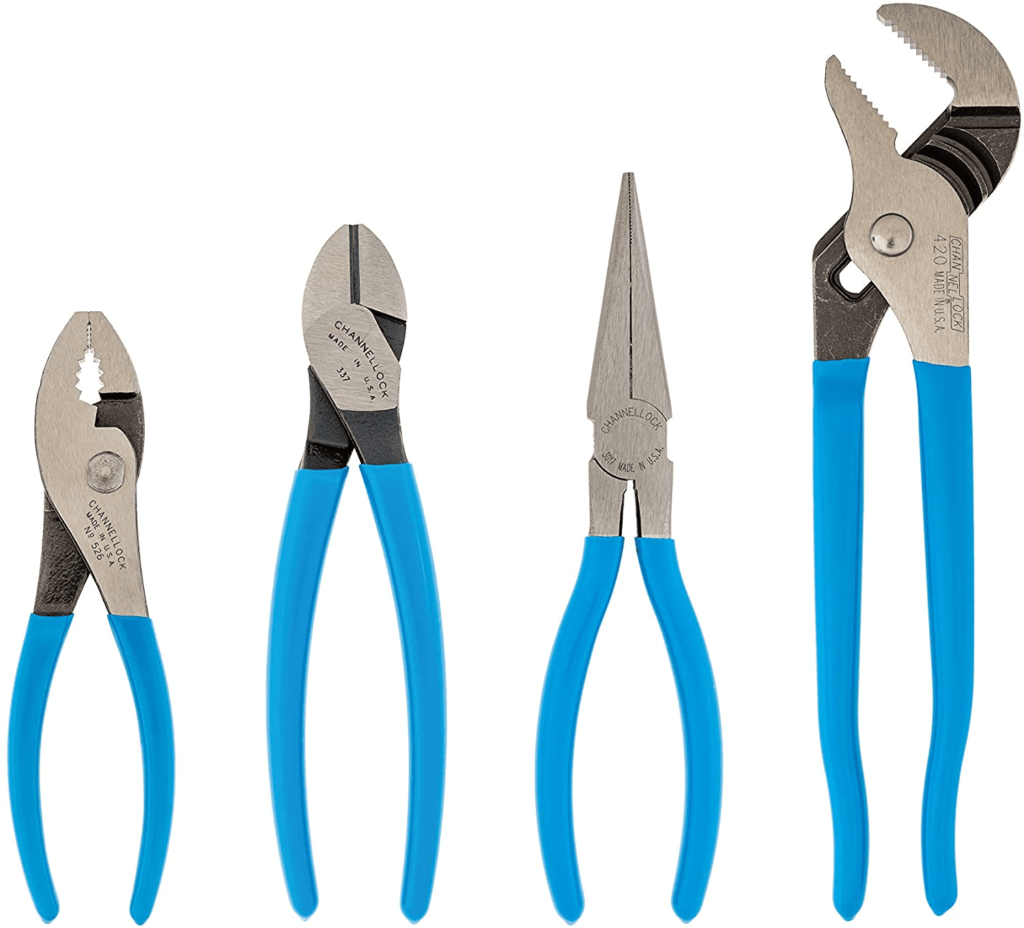
Pliers are used for a broad range of general, building, and plumbing jobs including cutting wires, repairing bent plugs, gripping rods and pipes, and twisting and turning nuts and bolts.
We suggest getting the whole set of them, if you can, because they might come in handy. From building model kits to securely screwing pipe connections, pliers can surely get the job done!
As for electrical works, they use a special type of pliers, called electrical or lineman’s pliers, which are designed to cut wires and remove their outer coatings. They also have rubber handles that protect the user from shock.
6) Adjustable Wrench
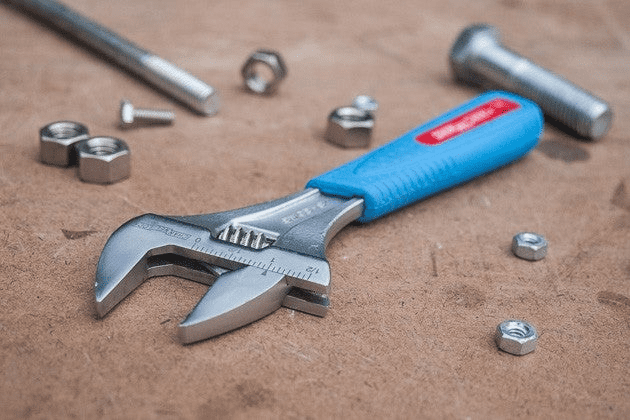
As opposed to traditional wrenches, an adjustable wrench is changeable in jaw width. This enables it to fit onto and turn various sizes of fastener heads, like nuts and bolts, to tighten or detach them.
On the market, there are tons of wrenches of different max opening sizes, lengths, and weights. Getting an adjustable wrench saves you the hassle of carrying multiple heavy wrenches on your person.
If you need more force in twisting out the nut, use a longer-handled wrench, whereas if you have to reach confined spaces, use the shorter one.
7) Duct Tape
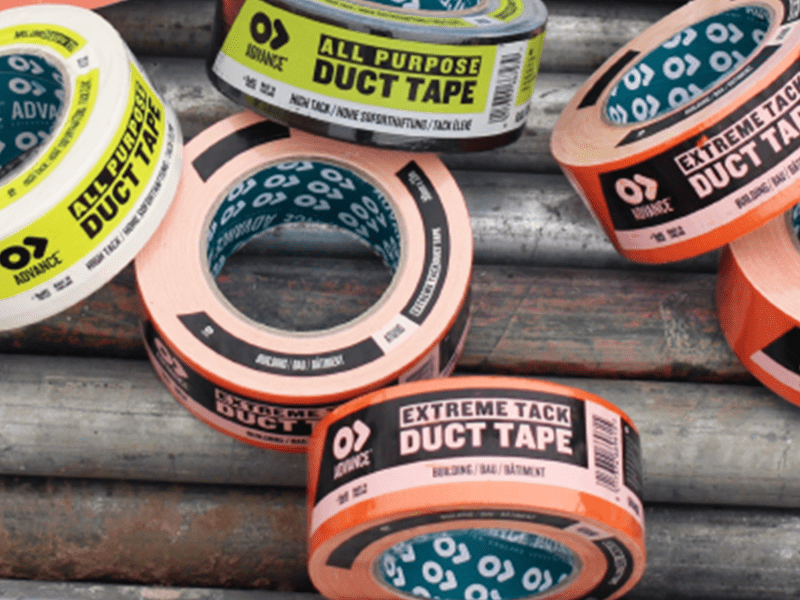
You can mend a lot of damaged things with duct tape. It adheres well to solid surfaces, is water-resistant, and simple to rip off.
Hence, it’s excellent to be used in patching holes, packing boxes, temporarily stopping leaks, and a wide scope of repair works. Note that it’s different from electrical tapes and shouldn’t be used as such.
8) Flashlight
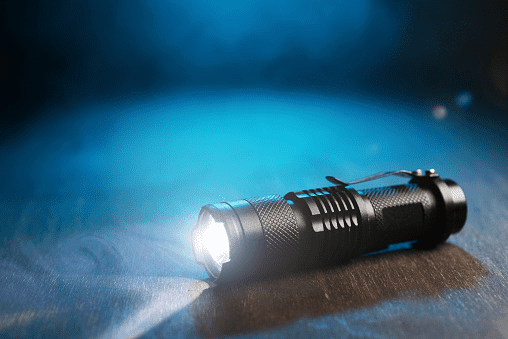
And last but not least, you have to have a flashlight in your DIY beginner’s toolbox. It enables you to illuminate dark sections or areas so you can fix the problem without delay.
There are a multitude of LED flashlights right now, which conserve power use and last for many years. And the size gets smaller and smaller too enough to fit into your pocket or for a child to use.
9) Putty Knife
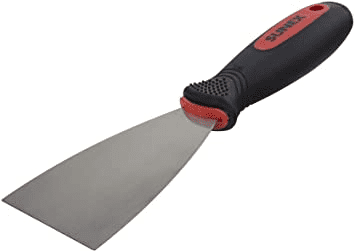
A putty knife is a useful implement for sealing holes and cracks on drywalls, glazing a window, and removing hardened floor residues and wallpapers.
It can have a fixed or flexible blade. For scraping off dirt, grime, or paint, you’d do well with a fixed putty knife, while for filling gaps and cracks, a flexible putty knife makes them easy to do.
10) Magnetic Stud Finder
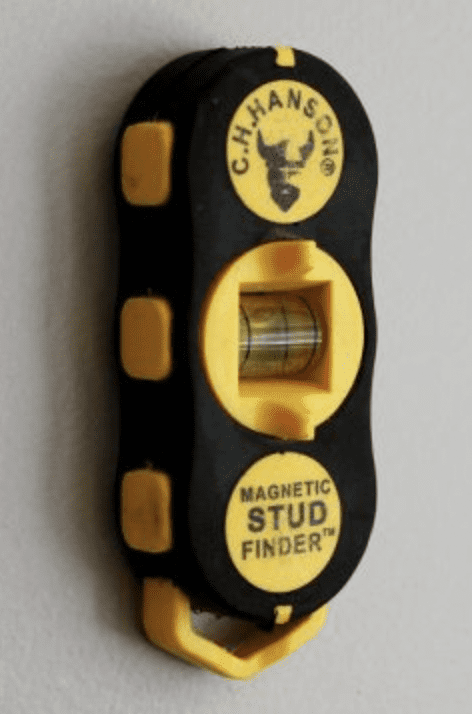
Another cool tool you should have in your toolbox is the magnetic stud detector. It’s useful when you want to hang something on the wall, like artwork, framed pictures, or flat-screen TV.
You wouldn’t want to needlessly make or drill a hole into a clean wall if there’s a stud behind it. This will just damage your wall and fail to support the weight of the hanging item.
It’s quite simple as to how it works: it uses a magnet to detect the metal from behind the drywall. And because magnets are attracted to metal, they will stick onto the studded wall area.




